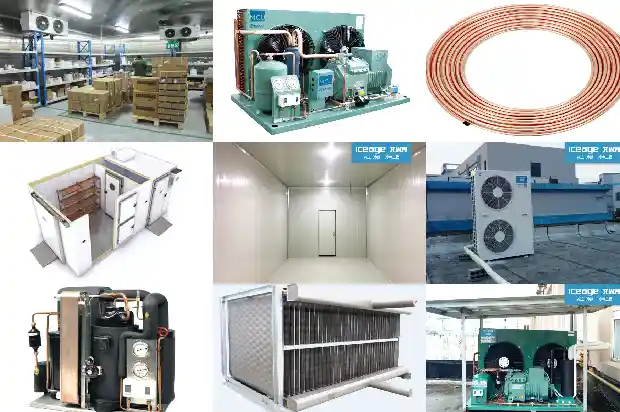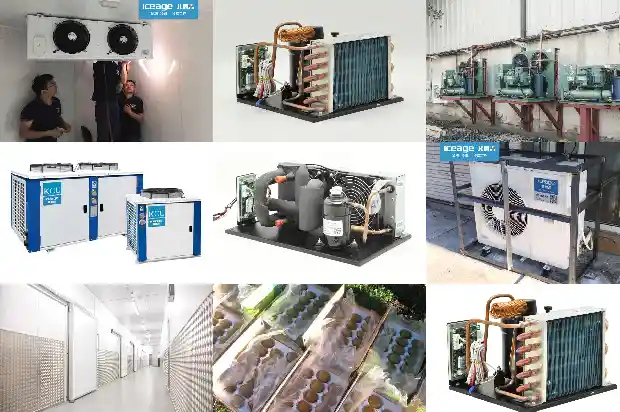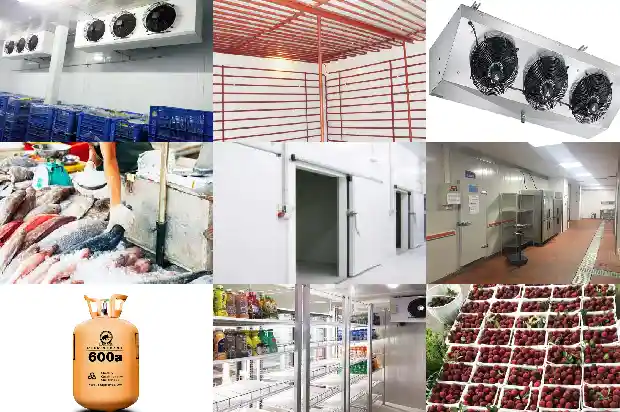Can You Solve These 4 Common Issues of Industrial Chillers?
2025-01-10
I.

- Pump Leakage (Causes: Poor connection of the shaft seal at the water pump or the shaft seal is damaged)
Solution: Replace the pump directly instead of replacing the shaft seal. - Water Tank Leakage (Causes: Pinholes appear at the welded position of the water tank or long - term use)
Solution: Send it back to the manufacturer to re - weld the leaking position. - Ball Valve and Diverter (Causes: Leakage of the ball valve and diverter)
Solution: Replace the ball valve and diverter. - Flared Connection Position of the Cylinder (Causes: Leakage at the flared connection position of the cylinder)
Solution: Disassemble it, re - make the flared end, and reinstall it. - Water Leakage at the Float Ball Position (Causes: The float ball has fallen or the adjusted position of the float ball is incorrect)
Solution: Re - install the float ball and adjust its position properly.
II.

- System Refrigerant Leakage (Inspection method: First, check the low - pressure gauge. If there is no pressure, it indicates refrigerant leakage)
Solution: Detect and repair the leak. Check every copper pipe connection to find out where the refrigerant is leaking. - Compressor Failure (The compressor fault may also be displayed) (Inspection method: Clamp the three wires of the compressor with a clamp meter to obtain the operating current. If the currents of the three wires are different, it is initially judged that the compressor is faulty. For a 5HP compressor, the normal current is around 9A - 10A, otherwise it is abnormal)
Solution: Replace the compressor. - Control Board Failure (The temperature displayed on the control board is abnormal or does not match the actual temperature)
Solution: Replace the control board. - Overload (During the use of the chiller, the temperature cannot reach the desired effect, or instead of decreasing, the temperature rises)
Solution: It indicates that the selected chiller power is not large enough. A larger chiller may be needed to reach the required temperature.
III. Chiller Reports Low - Pressure Fault
- System Refrigerant Leakage (Inspection method: First, check the low - pressure gauge. If there is no pressure or the pressure is low, it indicates refrigerant leakage)
Solution: Detect and repair the leak. Check every copper pipe connection to find out where the refrigerant is leaking. - Pressure Controller Failure
Solution: Check whether the pressure controller can be reset. If it cannot be reset, replace the pressure controller. - Control Board Failure (If everything else is normal, the low - pressure fault report may be caused by a computer program error)
Solution: Replace the control board and re - adjust the parameters. - Filter Blockage (If one side of the filter and the capillary tube is cooler and the temperature of the other side does not change, it indicates that the filter is blocked)
Solution: Replace the filter.
IV. High - Pressure Alarm (Check the high - pressure gauge when starting the machine. If the pressure keeps rising, a high - pressure alarm will occur)
Generally, it is not the manufacturer's problem. The following methods can be used to solve the customer's problem:
- Is the water tower water turned on? Is the cooling water circuit unobstructed?
- The water quality of the water tower. If it has been used for more than half a year and the water tank has not been inspected, the water tank needs to be cleaned.
- If it is an air - cooled type, the condenser needs to be cleaned when it is old.

- If the above points cannot solve the problem, it may be a problem with the pressure controller and the control board. Then, replace the pressure controller or the control board.
Related Articles
- How to Calculate Refrigeration Load? And What Are the Issues?
- What Issues Should Be Noted in Cold Storage Installation and Construction?
- Frosting and Defrosting Issues of Air - cooled Heat Pumps
- Common Issues in Chiller Operation and Solutions
- Common Issues in Refrigeration Systems
- Common Issues with Refrigeration Equipment: What to Do?
- Common Issues to Pay Attention to During Cold Room Installation and Construction
- Introduction to the Components of a Cold Storage Unit and Common Issues in Cold Storage Units
- What Are the Differences Between Chillers and General Water - cooled Equipment?
- Maintenance Strategies for the Working Cycle and Electrical Automatic Control of Chillers
- What are Refrigeration Equipment? What's the Principle of Chillers?
- Common Faults of Industrial Chillers
- Common Faults and Corresponding Solutions of Chillers During Use
- How to Install and Maintain Industrial Chillers?
- Introduction to Lithium Bromide Absorption Chillers
- 8 Maintenance Procedures for Industrial Chillers
- Effective Measures to Prevent Compressor Failures in Industrial Chillers
- Reference Points for Selection of Screw - type Chillers
